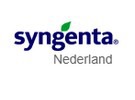As a grower, you would rather not have any pests in your greenhouse at all. Luckily there are products you can use in case you do have to deal with such a situation. But what if such a pest develops resistance against the product you are using?
"For starters, let’s look at what causes resistance. Insects multiply, and during that process, sudden mutations can occur within their genetic material. Due to those mutations,” as Caroline van den Hoek of Syngenta Crop Protection explains, “an insect can become less susceptible or even insusceptible to a type of pesticide.”

For example: after spraying with the pesticides, it appears that, in a population, 1 or 2 remain who have developed a resistance to the product. If you then use the same product the next time you spray, the insects that have become resilient will continue multiplying and passing on their resistance to the product to their offspring. They are bred out, as it were since they are less or insusceptible to the product that is being used. Because of this, you could end up with more and more resistant insects if you use a product that is too one-sided from the same product group.
Warning triangle
The lowered susceptibility forms one of the three factors that together form the ‘warning triangle’ resistance. “The triangle consists of three factors: de pest, the product, and the circumstance (the agronomic risk). We cannot change the product; the active substance works in a certain way after all. The pest is also not really something we can change, but what we can do is limit the agronomic risks.”
Limiting risks
In terms of limiting agronomic risks, Syngenta advises changing the pesticides used as often as possible, based on the IRAC- and FRAC lists. Those two commissions divide products based on their operating mechanism, on which Syngenta bases their advice. This could include using as many different products as possible. Still, if there isn’t much variety in the type of product needed (for instance, due to regulatory restrictions), they could look into how to have variety in the times they are used.
The task of passing this knowledge along initially lies with the distributors. However, over the past few years, Syngenta has been more involved in the transferring of knowledge to the growers, for instance, by using the online knowledge platform Expert Center. Caroline provides some viewing advice for visitors of the Expert Center: the site contains two videos that explain all the ins and outs of resistance management.
For more information:
Syngenta
www.syngenta.nl/expert-center/resistentiemanagement
Caroline van den Hoek
caroline.van_den_hoek@syngenta.com
+31 (0)6-82689936
